Ford Puma vs Mercedes E-Class Wagon – Differences & prices compared
Compare performance, boot space, consumption and price in one view.
Find out now: which car is the better choice for you – Ford Puma or Mercedes E-Class Wagon?
The Ford Puma (SUV) comes with a Petrol MHEV or Electric engine and Manuel or Automatic transmission. In comparison, the Mercedes E-Class Wagon (Estate) features a Diesel MHEV, Plugin Hybrid or Petrol MHEV engine with Automatic transmission.
When it comes to boot capacity, the Ford Puma offers 523 L, while the Mercedes E-Class Wagon provides 615 L – depending on how much space you need. If you’re looking for more power, decide whether the 168 HP of the Ford Puma or the 585 HP of the Mercedes E-Class Wagon suits your needs better.
In terms of consumption, the values are 13.10 kWh5.40 L per 100 km for the Ford Puma, and 0.50 L for the Mercedes E-Class Wagon.
Price-wise, the Ford Puma starts at 24800 £, while the Mercedes E-Class Wagon is available from 52600 £. Compare all the details and find out which model fits your lifestyle best!
Ford Puma
The Ford Puma presents itself as a stylish compact SUV with a distinctive design that combines practicality with a dynamic driving experience. Its sleek lines and sporty aesthetics make it stand out on the road, while the interior offers a comfortable and tech-savvy environment. With an emphasis on efficiency and a smooth drive, the Ford Puma is well-suited for both urban commutes and countryside adventures.
details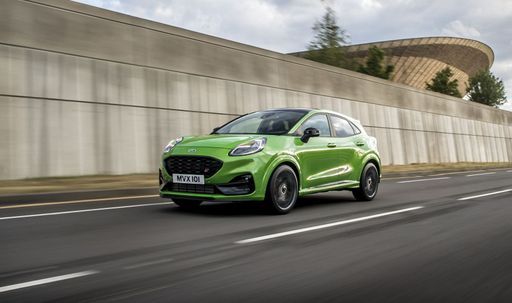 @ puma.fordpresskits.com
@ puma.fordpresskits.com
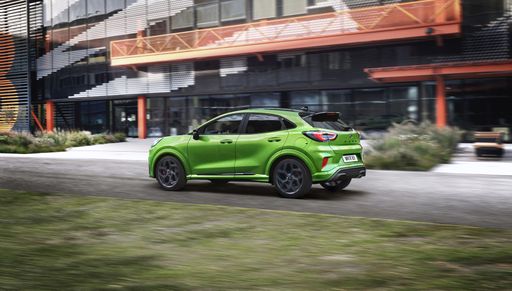 @ puma.fordpresskits.com
@ puma.fordpresskits.com
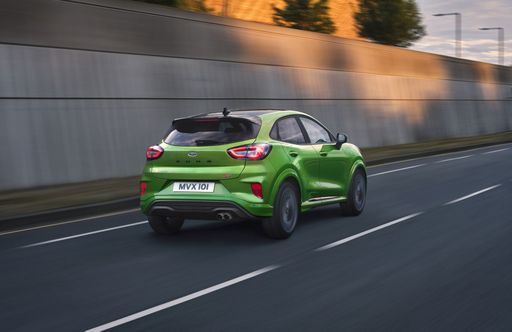 @ puma.fordpresskits.com
@ puma.fordpresskits.com
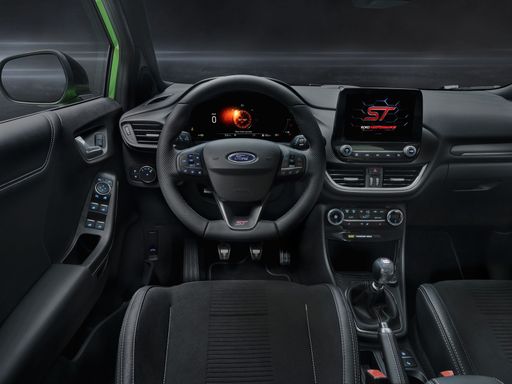 @ puma.fordpresskits.com
@ puma.fordpresskits.com
Mercedes E-Class Wagon
The Mercedes-Benz E-Class Wagon offers a harmonious blend of luxury and practicality, making it a favourite for those who value both style and functionality. Its sleek exterior design is matched by a sophisticated interior that provides a comfortable and spacious environment for both driver and passengers. This vehicle also boasts advanced technology features, ensuring a smooth and connected driving experience.
details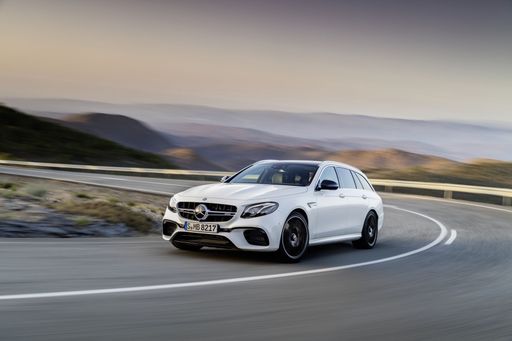 @ group-media.mercedes-benz.com
@ group-media.mercedes-benz.com
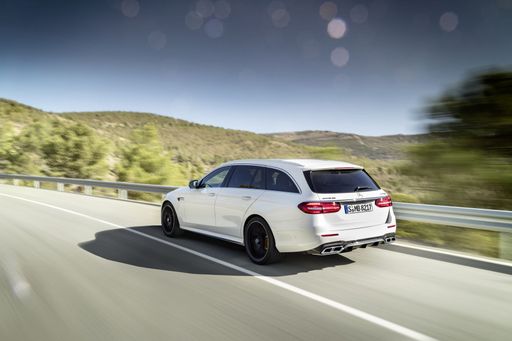 @ group-media.mercedes-benz.com
@ group-media.mercedes-benz.com
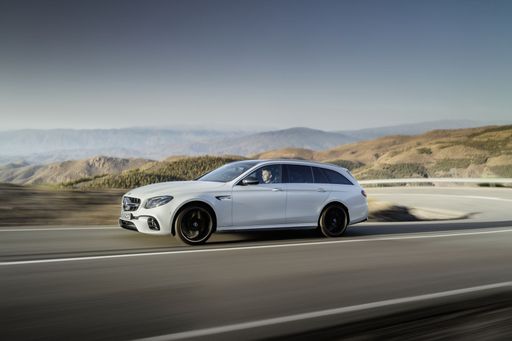 @ group-media.mercedes-benz.com
@ group-media.mercedes-benz.com
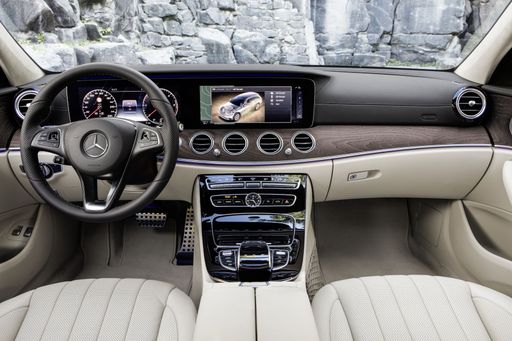 @ group-media.mercedes-benz.com
@ group-media.mercedes-benz.com

|

|
|
|
|
Costs and Consumption |
|
|---|---|
|
Price
24800 - 36300 £
|
Price
52600 - 121800 £
|
|
Consumption L/100km
5.4 - 6 L
|
Consumption L/100km
0.5 - 7.9 L
|
|
Consumption kWh/100km
13.1 - 13.7 kWh
|
Consumption kWh/100km
-
|
|
Electric Range
364 - 376 km
|
Electric Range
97 - 110 km
|
|
Battery Capacity
43 kWh
|
Battery Capacity
21.20 kWh
|
|
co2
0 - 136 g/km
|
co2
12 - 181 g/km
|
|
Fuel tank capacity
42 L
|
Fuel tank capacity
50 - 66 L
|
Dimensions and Body |
|
|---|---|
|
Body Type
SUV
|
Body Type
Estate
|
|
Seats
5
|
Seats
5
|
|
Doors
5
|
Doors
5
|
|
Curb weight
1316 - 1563 kg
|
Curb weight
1900 - 2435 kg
|
|
Trunk capacity
456 - 523 L
|
Trunk capacity
460 - 615 L
|
|
Length
4186 - 4226 mm
|
Length
4949 - 4959 mm
|
|
Width
1805 mm
|
Width
1880 mm
|
|
Height
1550 - 1555 mm
|
Height
1469 - 1497 mm
|
|
Payload
367 - 469 kg
|
Payload
540 - 645 kg
|
Engine and Performance |
|
|---|---|
|
Engine Type
Petrol MHEV, Electric
|
Engine Type
Diesel MHEV, Plugin Hybrid, Petrol MHEV
|
|
Transmission
Manuel, Automatic
|
Transmission
Automatic
|
|
Transmission Detail
Schaltgetriebe, Automat. Schaltgetriebe (Doppelkupplung)
|
Transmission Detail
Automatikgetriebe
|
|
Drive Type
Front-Wheel Drive
|
Drive Type
All-Wheel Drive, Rear-Wheel Drive
|
|
Power HP
125 - 168 HP
|
Power HP
186 - 585 HP
|
|
Acceleration 0-100km/h
7.4 - 9.8 s
|
Acceleration 0-100km/h
4.1 - 8.8 s
|
|
Max Speed
160 - 210 km/h
|
Max Speed
213 - 250 km/h
|
|
Torque
170 - 290 Nm
|
Torque
320 - 750 Nm
|
|
Number of Cylinders
3
|
Number of Cylinders
4 - 6
|
|
Power kW
92 - 124 kW
|
Power kW
137 - 430 kW
|
|
Engine capacity
999 cm3
|
Engine capacity
1993 - 2999 cm3
|
General |
|
|---|---|
|
Model Year
2024 - 2025
|
Model Year
2023 - 2024
|
|
CO2 Efficiency Class
D, E, A
|
CO2 Efficiency Class
E, B, F, D, G
|
|
Brand
Ford
|
Brand
Mercedes-Benz
|
Ford Puma
A Glimpse into the Ford Puma: Fusing Style with Innovation
The Ford Puma stands as a testament to modern engineering fused with style. This compact SUV is not just about aesthetics but brings to the table an array of technical innovations, topped with the reliability and performance Ford is known for. Let's delve into the technical specifics and innovative features that make the Ford Puma a stellar choice for any car enthusiast.
Powertrains and Performance
The Ford Puma is offered with a range of powertrains designed to deliver optimal performance whilst minimising fuel consumption. At the heart of this compact SUV is the 1.0 EcoBoost Hybrid engine, available in both 125 PS and 155 PS variants. This engine is a marvel of engineering, optimised to deliver power efficiently with a remarkable fuel consumption ranging from 5.4 to 5.7 L/100km for manual versions, and slightly higher for the automated variants.
The top-end 1.5 EcoBoost ST variant takes performance up a notch, providing a robust 200 PS that propels the Puma from 0 to 100 km/h in just 6.7 seconds. This variant is perfect for those who prioritise performance and exhilaration in their driving experience.
Mild-Hybrid Technology
The Puma's mild-hybrid technology plays a significant role in enhancing fuel efficiency and reducing emissions. By utilising a belt-driven integrated starter/generator, the Puma recovers energy usually lost during braking, storing it in a 48-volt lithium-ion battery. This stored energy is then used to assist the engine, providing a boost during acceleration and smoothing out the stop-start technology, ultimately leading to enhanced fuel efficiency.
Design and Comfort
The Ford Puma does not compromise on style and comfort with its ergonomic and stylish design. The SUV is available in multiple trims including the ST-Line, Titanium, and the luxurious Vignale editions, each offering unique aesthetic and technological enhancements. These trim levels provide varied offerings in terms of both exterior styling and interior comfort, ensuring there's a Puma that meets every personal preference.
Inside, the Puma offers a driver-focused cockpit with advanced technological integrations such as the SYNC 3 infotainment system, providing seamless connectivity and intuitive control of the vehicle's numerous technological features.
Safety and Technology
Safety remains paramount, and the Ford Puma is equipped with the latest security and technology features. It boasts the Ford Co-Pilot360 suite which includes adaptive cruise control, pre-collision assist with autonomous emergency braking, and lane-keeping assist, enabling a safer driving experience on both city roads and highways.
Versatility and Practicality
Beyond performance and safety, the Ford Puma shines in its versatility. With a boot capacity of 456 litres, it offers ample space for all sorts of adventures, whether you're heading on a family trip or loading sports equipment. Its innovative MegaBox is an extra storage solution, providing additional space below the boot floor.
The Puma's agile handling, paired with its compact dimensions—spanning a length of 4186 to 4266 mm and a width of 1805 mm—makes it an ideal choice for urban commuting and beyond.
Conclusion
In conclusion, the Ford Puma beautifully blends practical features with cutting-edge technology, offering a package that appeals to both the tech-savvy driver and those seeking comfort and reliability. Its range of innovative features, powerful yet efficient engine options, and a design that is both functional and stylish make it a frontrunner in the compact SUV market.
Whether you're drawn by the efficient mild-hybrid engines or the robust performance of the ST variant, the Ford Puma represents a modern driving experience where innovation meets everyday usability.
Mercedes E-Class Wagon
Introduction to the Mercedes-Benz E-Class Wagon
The Mercedes-Benz E-Class Wagon, or T-Modell, has long been synonymous with luxury, versatility, and cutting-edge technology. It stands as a paragon of engineering excellence, continually raising the bar in the premium estate category. Catering to a wide array of needs, this model combines elegance with functionality, offering both performance and practicality in equal measure.
State-of-the-Art Powertrains
At the heart of the E-Class Wagon are its diverse powertrain options, designed to meet varying driver preferences. Boasting everything from mild-hybrid diesel and petrol engines to advanced plug-in hybrid systems, the model ensures reduced emissions without compromising performance. Engine options range from 220 PS to a thrilling 585 PS, supported by seamless automatic gearboxes that provide a smooth and dynamic driving experience.
Innovative Features and Technology
The Mercedes-Benz E-Class Wagon is brimming with innovative features that enhance safety and driving pleasure. The latest models come equipped with intelligent drive features, including advanced driver-assistance systems that anticipate and react to road conditions in real time. These include adaptive cruise control, lane-keeping assist, and autonomous emergency braking, working together to create a safer and more comfortable journey.
Exceptional Comfort and Practicality
Possessing an uncompromising attention to detail, the E-Class Wagon offers luxurious interiors that blend premium materials with cutting-edge technology. The spacious cabin seats five comfortably, while the load capacity of up to 615 litres ensures ample space for luggage and equipment. Options for exclusive trim lines, such as the AMG Line and Exclusive Premium variants, allow for bespoke touches tailored to individual tastes.
Eco-Friendly Efficiency
As the automotive industry pushes towards sustainability, Mercedes-Benz has ensured that the E-Class Wagon stays ahead of the curve. With CO2 emissions ranging from a mere 12 g/km in hybrid variants to a commendable efficiency of 181 g/km for the more powerful models, and fuel consumption as low as 0.5 L/100km, these estates deliver eco-friendly performance that doesn't sacrifice power.
Advanced Safety Systems
Safety is paramount in the E-Class Wagon, thanks to the incorporation of pioneering systems that protect both driver and passengers. The models benefit from sophisticated airbags, intelligent braking technology, and structural enhancements that have all contributed to an enhanced safety rating. Additionally, dynamic handling updates ensure a stable ride even in challenging driving conditions.
Conclusion
In summary, the Mercedes-Benz E-Class Wagon is a luxury vehicle that pushes boundaries through its impressive range of technical features and innovation. Whether for urban commutes or grand touring, the estate's harmonious blend of efficiency, performance, and luxury sets a new standard for what a premium estate can offer.
The prices and data displayed are estimates based on German list prices and may vary by country. This information is not legally binding.
